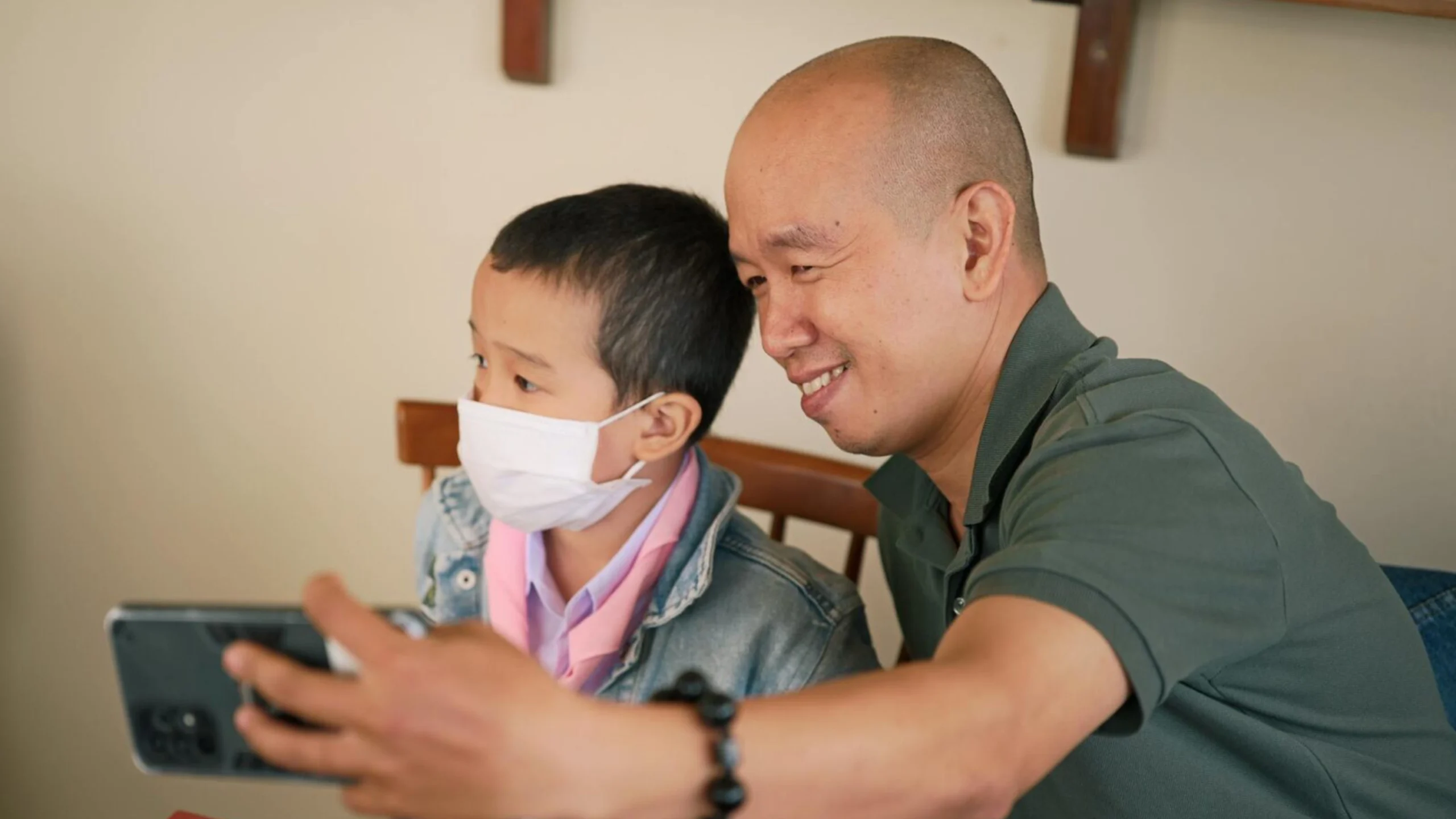How the K-12 Curriculum Worked But Made Teachers and Families Struggle
Over the years, the K-12 Curriculum created some advantages in schools but also revealed various disadvantages.
It was quite a shock for schools and parents alike when the Philippines transformed their school system into the current K-12 Curriculum. Schools and tutorial houses needed to shift their calendars and investigate their current course outlines and syllabi, challenging them to adopt a more critical-thinking and holistic educational approach to teaching children. Alongside the drastic content and method change, it has affected parents, too, wherein they can’t guide their kids because there are “too many things to teach” when Dr. Pam Robertson, deputy director of the Assessment, Curriculum and Technology Research Centre (ACTRC) revealed the results of her study during the Senate hearing of refining and implementing the MATATAG Curriculum.
All the more because parents needed to homeschool their kids, the implementation of the K-12 curriculum in the Philippines has revealed that there’s still much to refine.

What was the K-12 curriculum’s original purpose?
When the late and former president Benigno “Noynoy” S. Aquino signed the law that will implement the K-12 Curriculum in 2012, it was in hopes of empowering the average “Juan Dela Cruz” with the knowledge to succeed in Life. “Naninindigan pa rin po tayo sa ipinangako nating pagbabago sa edukasyon: ang gawin itong sentral na estratehiya sa pamumuhunan sa pinakamahalaga nating yaman: ang mamamayang Pilipino. Sa K to 12, tiwala tayong mabibigyang-lakas si Juan dela Cruz upang mapaunlad — hindi lamang ang kanyang sarili at pamilya — kundi maging ang buong bansa,” he posted on his Facebook page.
Here, the K-12 curriculum hoped to address the lack of proper skills and abilities in the average Filipino by adding more emphasis to it in the earlier years (Oracion, Naidu, Ng, and Reyes, 2020). Kindergarten and the first six years of primary school would teach the basics in the mother tongue. Then, junior and senior high would tie everything together, demonstrating how these basic skills translate to the more complex topics which is what college usually does. Ideally, it would allow even someone who didn’t graduate from college to get a job so long as he had the competencies to prove he accomplished the job — a common case among out-of-school youth (Sergio, 2012).
What actually happened?
While the K-12 curriculum had its merits in allowing our kids to compete internationally, it unfortunately created a new set of problems for the parents and teachers. On one hand, teachers sometimes forego being comprehensive with how they teach because they need to focus on making sure the students obtain the required competencies and skills within the set time frame (Cabansag, 2014). Students, because they need to compensate for the lack of time, rely on memorizing how to do it rather than why they should do it in that way (Abulencia, 2015; Barcelo, 2019; Almerino et. al, 2020).
At home, most especially for the homeschooled, we were probably scratching our heads when we saw what our kids were learning because of the K-12 Curriculum. In grade 10, kids began learning Pre-Calculus and Statistics which is what we remember taking in college for business and management. Balancing chemical equations — wait, didn’t we take that in 3rd Year High School before? Why are the kids taking it in Grade 9? (de Justo, Digal, and Lagura, 2012; Abulencia, 2015; Barcelo, 2019)
Then, there’s the strand system which can become a tad confusing because, to some educators, it narrows the child’s choices to a select few career paths.

Clash of culture, values, and education
As parents, we invest heavily in our kids’ education even though we are aware of the system’s pitfalls. We work hard to get them the highest quality education and sometimes feel cheated out when our kids fall short in grades. Sometimes, we even feel that our children’s failure to adjust to the current K-12 curriculum in the Philippines is a reflection of our own ability as a parent which consequently, triggers feelings of frustration (Alampay and Garcia, 2019).
Besides the parents feeling frustration, teachers — most especially those in the public system — will feel burnout from teaching both multiple competencies and multiple subjects (Alegado, 2018; Bongco and David, 2020). When the frustration and burnout finally overflow, the one who pays the price are the students. Consequently, they are left with feelings of incompetence and lowered self-esteem.
How does rhe MATATAG Curriculum differ and will it be any better?
Unlike the K-12 curriculum, the MATATAG curriculum answers the lack of social and religious values that originally came from the Filipino traditional education system. While it will still use the knowledge and skills-centric basis of the old curriculum, MATATAG hopes to “decongest” the former. It also involves giving students the choice to either go vocational or technical training. Thus, it’ll change how careers are seen. College degrees and vocational degrees will now be equal in value when applying for a job or starting a career.
From 11,000 competencies, our kids will now need only 3,000. Although it’s still a lot, it’s now significantly less, and perhaps, this is the upgrade the K-12 curriculum in the Philippines needs. It will all boil down now to execution and to see if our kids will benefit from it.
References
Abulencia, A. S. (2015). The unraveling of K-12 Program as an education reform in the Philippines. Sipatahoenan, 1(2).
Alampay, L. P., & Garcia, A. S. (2019). Education and parenting in the Philippines. School systems, parent behavior, and academic achievement: An international perspective, 79-94.
Alegado, P. J. E. (2018). The challenges of teacher leadership in the Philippines as experienced and perceived by teachers. International Journal of Education and Research, 6(6), 291-302.
Almerino, P. M., Ocampo, L. A., Abellana, D. P. M., Almerino, J. G. F., Mamites, I. O., Pinili, L. C., Tenerife, J. J., Sitoy, R. E., Abelgas, L. J. & Peteros, E. D. (2020). Evaluating the academic performance of K-12 students in the philippines: A standardized evaluation approach. Education Research International, 2020, 1-8.
Barcelo, C. D. (2019). Problems in the Implementation of K-12 Curriculum by Grade 11 Students in Aurora Province, Philippines. JPAIR Institutional Research, 12(1), 111-124.
Bongco, R. T., & David, A. P. (2020). Filipino teachers’ experiences as curriculum policy implementers in the evolving K to 12 landscape. Issues in Educational Research, 30(1), 19-34.
Cabansag, M. G. S. (2014). Impact statements on the K-12 science program in the enhanced basic education curriculum in provincial schools. Researchers World, 5(2), 29.
De Justo, H. G. A., Digal, E. J. O., & Lagura, G. B. (2012). An Analysis of the Policy: K-12 Education Program. Unpublished manuscript, University of Southeastern Philippines, Davao City, Davao Del Sur. Retrieved from https://www. academia. edu/6050759/A_ Policy_Paper_ in_PA_241_An_Analysis_of_the_Policy _K-12_Education_Program.
Oracion, C., Naidu, V. L., Ng, J., & Reyes, J. V. (2020). Advancing the K-12 reform from the ground: A case study in the Philippines.
Robles, R. J. (2018). Profiling and mapping of prospective senior high school students on the implementation of K12 in the Philippines. International Journal of Education and Learning, 7(2), 33-42.
Sergio, M. R. S. (2012). K-12 education reform: Problems and prospects. Ateneo de Naga University Gibon, 9, 70-80.
Looking into our kids’ education?
DepEd Launches an Adjusted Matatag Curriculum
Navigating Post-Pandemic Education with a Teacher and Mom
7 Tips to Educate Kids and Spot Fake News









